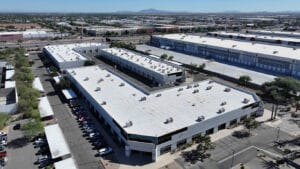A new CBRE survey finds that commercial real estate values have returned to pre-pandemic levels in many U.S. markets, continuing a recovery throughout the first half of 2021 that began at year-end.
The CBRE survey found that more than two-thirds of real estate investors exhibited increased risk appetite in H1 2021. Investors now broadly expect cap rates to remain stable or compress across most property types through the end of the year.
“The rapid recovery across U.S. real estate markets was mostly made possible by the massive fiscal and monetary response to the COVID-19 downturn that stabilized the economy and benefited property values,” said Chris Ludeman, Global President of Capital Markets for CBRE. “While some uncertainty remains, a strong economic recovery will continue to benefit property fundamentals, investment volumes and values.”
CBRE’s survey, which examined capitalization rates for stabilized properties and investment sentiment on market conditions, revealed several key findings. Capitalization rates—usually called cap rates—measure a property’s value by dividing its annual income by its sale price. A lower cap rate generally indicates a higher value.
READ ALSO: Metro Phoenix industrial market breaks record for construction
Cap rates for stabilized Class-A office product compressed modestly across Greater Phoenix’s suburban markets, ranging between 5.75 percent and 6.75 percent, down from 6 percent and 7 percent in H2 2019. Long-term leased, newly constructed single-tenant assets have also seen additional cap rate compression, ranging between 5.3 percent and 6.1 percent over the past 12 months in Metro Phoenix.
“There is an abundance of capital seeking stabilized, well-located, yield-producing office assets,” said Phoenix-based First Vice President Chris Marchildon. “There have only been minimal opportunities to deploy capital, so investors have focused their attention on consistent cash flow, credit worthy tenancy, and strategically situated assets. This coupled with the low-interest rate environment, extreme compression in the industrial and multifamily product types, and a consistent in-migration of new labor to the marketplace, are all reasons why quality office investments are achieving both cap rate compression and prices per square foot never before seen in the Metro Phoenix office market.”
He added, “Investors coming into this segment in this region are of all shapes and sizes, ranging from foreign, institutional, funds and private equity. The breadth is due to the region’s diverse and sustainable economy, consistent in-migration and a yield advantage over the coastal markets.”
For multifamily product in the Metro Phoenix area, cap rates declined most steeply in suburban areas to between 3 percent and 3.75 percent in H1 2021 from a range of 4.25 percent and 4.75 percent in the second half of 2019.
“The fundamentals for this region are exceptionally strong,” said Phoenix-based Executive Vice President Matt Pesch. “Occupancies are at all-time highs, supply is not able to keep pace with demand, and the result is unprecedented rent growth allowing buyers to accept a lower yield on in-place income today with the expectation that this growth will continue.”
He added, “As fundamentals deteriorated in other product types such as retail and hospitality, and in other geographic areas, investors had fewer options to place money, which put downward pressure on cap rates in markets such as Phoenix with strong fundamentals.”
In the industrial sector, cap rates in Greater Phoenix further compressed in H1 2021 to between 3.50 percent and 4.25 percent from 4.75 percent and 5.25 percent in H2 2019.
“We are seeing even further compression through the first 60 days of the third quarter,” said Executive Vice President Rusty Kennedy. “Greater Phoenix offers so much to industrial tenants from affordable, accessible and reliable power to affordable housing to a great labor pool and excellent access to a population of close to 35 million people in a single day’s truck haul. As the fastest-growing county in the U.S., Maricopa County offers an incredible quality of life and tremendous opportunities for growing companies.”
He added, “As the presence of regional and national users in the market has grown exponentially, investors have been flocking to Metro Phoenix with its business-friendly environment, newer construction and available land to develop.”



